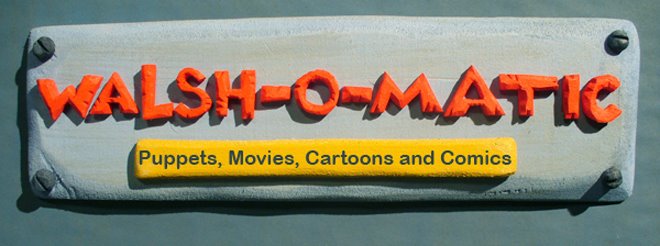This and basically every puppet making entry will describe a process for making a HUMANOID puppet- two arms, two legs, standing upright, head on top. From this basic structure, you can modify your heart out...
Now that you know specifically what your puppet has to do, draw your whole character from the front, AT FULL SIZE.
Regular computer paper works just fine for drawing the character out (and you can putit on a light table or against a window to trace through, for designing armatures later on). Do rotational drawing if you want to, but a lot of the 3d aspect will come out in the actual sculpting/crafting of the puppet...I personally like to get the size right on paper, then let the character fill out as I sculpt/craft him/her/it.
An adult male is approximately 30 cm tall (this gives you an adult puppet that is big enough to easily animate, but small enough to keep your sets and props that will go with this puppet small enough to be manageable). This is basically working at 1/6th scale, if you are wondering. It's pretty standard.
The bigger your puppet, the bigger the sets and props have to be, and that can take up space and material very quickly!
Kid puppets are obviously smaller than the adults, but you need to actually keep kids bigger than they really would be in relation to a 30 cm adult. Think of making a kid puppet (compared to an adult) as making a very short adult. If you make a kid puppet too small, it will be almost impossible to animate, because its parts will be so tiny.
Draw out all of your characters (if you have more than one) like this, so you can check them all against each other for size relationships. Since you are now working at FULL SIZE, if your storyboard shows lots of shots featuring character A in a medium shot along side character B, both characters had better be approximately the same height for composing those shots, or your going to go mad trying to find a camera angle that allows you to get your shot! In other words, a giraffe and a mouse would have a hard time sharing the same frame. To get your shot, you could lie the giraffe down, or put the mouse on a ladder (both of which are possibly valid staging options), but you then need a giraffe puppet that can lie down, or you need to craft a ladder! And if so, do either of these options really WORK for your story? Or do they distract from the real intent of the scene?
As you can see, size relationships have a lot of impact on production. Drawing your characters at full size at this early stage will let you see these sorts of issues early, and let you redesign or reboard...
Now that you have a SCALE drawing (meaning you have a drawing the is the same size as the puppet is going to be), this scale drawing will also be used for creating the puppet's armature, and to help with framing, sets, props... but before that happens, you should make the puppet's head.
Yep, take it from me: get your puppet designed on paper, to scale. Then start with the head, not the body. At this point, you should be almost thinking of them as two separate (but connected) production issues: the head, and then the rest of the puppet.

No comments:
Post a Comment